Keeshond is a variety of German Wolfspitz, born thanks to the efforts of Dutch breeders. All representatives of the breed have a double long wolf coat and have a lively temperament.
Keeshond is a charming shaggy man with an endless battery of fun inside, with whom the gloomiest day is colored into rainbow fireworks. This indefatigable fluffy is always sincerely glad of three things: communication with the owner, goodies in his own bowl, and easy walks in nature. Try to satisfy these basic, according to the pet, needs daily – and you will become the center of the universe for the Keeshond, and at the same time the most adored creature on the planet.
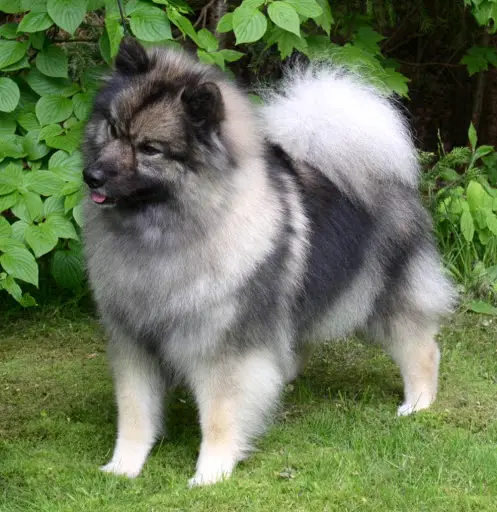
At various dog shows, Keeshond is usually presented as a Dutch “version” of the German Spitz, which has been one of the most widespread European breeds since the 16th century. Initially, the aristocratic image of the dogs was not fixed, so the Wolfspitz played the role of ordinary mongrels: they hung around the farms and vineyards of German peasants, occasionally barking strangers who violated the territorial boundaries.
It is not known exactly how and when exactly the ancestors of the Keeshond emigrated to the Netherlands, but they took root in a new place quickly and even managed to participate in the political life of the country – the breed was highly respected by the leader of the local party of patriots, Cornelius de Giselard. Subsequently, this involvement in the rebel movement cost the lives of thousands of dogs, which were exterminated simply because they had previously had the misfortune to please the rebel. However, it was not possible to destroy the breed, and the Dutch Keeshond continued to breed, gradually restoring their own numbers.
In 1880, German dog breeders standardized all varieties of Spitz, including Keeshond. In the future, the development of the breed took place not so much in the Netherlands as in England, Sweden, Australia, and the USA. As for the show career, it began for Keeshond in 1891, when several animals were presented at the Amsterdam exhibition. By that time, the Wolfspitz from the Netherlands had been renamed “barge dogs” because they often cut the Dutch rivers with the owners of small boats.
In 1924, the first monobreed club, the Nederlandse Keeshond Club, began operating in the Netherlands, owing to its opening to Baroness van Hardenbrock, who at that time was considered the largest barge dog breeder in the country. And two years later, the Dutch Keeshond was registered by the Kennel Club of Great Britain.
In the USSR, dogs similar to Keeshond appeared in the 1980s, but they were circus individuals that were not suitable for the role of breeding material. Fully breeding the breed in Russia began only in the mid-90s, and at first, the wards of domestic breeders did not meet the standards of international cynological associations. As a result, in 1993, foreign champion manufacturers were brought into the country, from which part of today’s Keeshond traces its lineage.
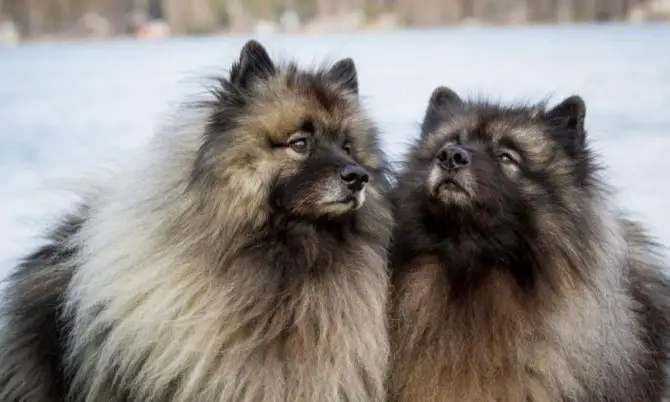
Even though the FCI continues to see a variety of Wolfspitz in Keeshond and allows representatives of both families to be displayed in the same ring, there are significant differences in the appearance and character of the breeds, which are better known in advance. So, for example, the Keeshond, although considered the largest representatives in the Spitz group, are much more compact than their German cousins.
A more advantageous appearance is also an advantage of the “Dutch”, since at one time German breeders relied on practicality, preferring to develop working qualities in wolf spitz rather than the glamor of appearance. There are different breeds and colors. The Keeshond has a richer color palette of wool and includes shades of gray, black, and beige. But the fur coats of the German Spitz have a traditional wolf color, in which the hairs are gray and black and white.
Going for a walk with a Keeshond, get ready that passers-by will see a wide variety of breeds in your friend: from Chow-Chow to Caucasian Shepherd Dog. And the point here is not in cynological illiteracy, but in the unique feature of the “Dutch” at the same time to resemble representatives of several canine groups at once.
The Keeshond has a medium-sized head, wide in the occipital part and acquiring a wedge-shaped shape in the region of the muzzle. The stop is smooth, turning into a harmonious short muzzle (the ratio of the length of the muzzle to the length of the cranial part of the head is 2: 3).
All representatives of the breed have around miniature black noses.
The small jaws of the Keeshond are closed either in a scissor bite or in a tick-like (less preferred option) bite. The dog’s lips are black, well-fitting, without pronounced folds.
The dark, oblique set of the eyes are small and oval in shape. The eyelids of the animal are black.
The Keeshond’s tiny ears are triangular in shape and have a hard, pointed tip. The earpiece is fixed in an upright position, which gives the dog a perky and mischievous look.
The necks of the purebred representatives of the breed have a convex scruff but are completely devoid of dewlap.
The high withers of the Keeshonda passes into a wide short back, ending in the same short and massive croup. The animal’s chest is harmoniously developed, the belly is slightly tucked up.
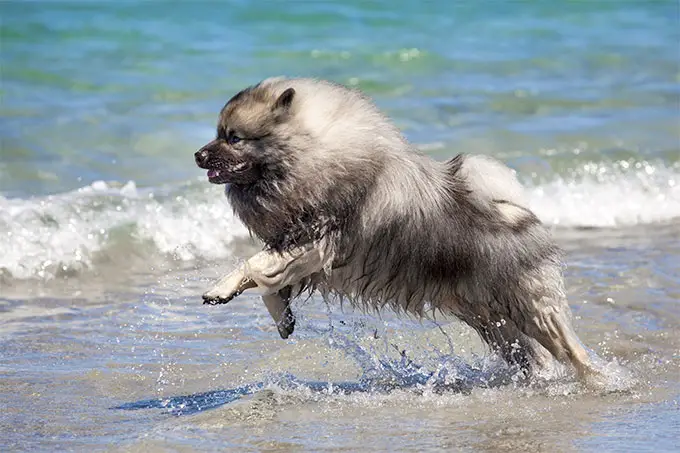
Wolfspitz brethren have wide, straight legs with long shoulder blades and muscular hips. The articulation angles are moderate, although the knee joints themselves are powerful. Metatarsus and pasterns are strong, but not long. Keeshond’s paws are small, “feline”, with black claws. The front legs are as rounded as possible, the hind legs are more oval.
The high-set tail of the dog at the base is turned up and forward and thrown on the back.
The representatives of the Spitz clan, including the Keeshond, have a double coat, formed by a thick layer of the thickest undercoat and a puffy top coat. The tail and the area around the neck are most abundantly pubescent, which gives the dog’s silhouette a pleasant roundness.
The FCI standard provides for the same type of color for Keeshond as for Wolfspitz (wolf). However, on closer inspection, it is noticeable that the “Dutch” has a richer shade of wool due to a small percentage of creamy hairs (wolf spitz hair is silvery-gray with a black tip).
The dog’s muzzle and ears are colored darker than the body. A black border of wool is formed around the eyes, and above the eyes, the same dark wool forms expressive eyebrows. The hair on the mane and shoulders of the Keeshond is lighter than in the area of the body. The legs and thighs are in a sophisticated silvery gray tone.
Keeshond of any gender cannot participate in the exhibition if he has:
- semi-erect ears;
- rolled or inverted eyelids;
- there are white spots on the coat;
- ungrown fontanelle;
- there are deviations from the types of bite allowed by the standard;
- shy or aggressive behavior.
They cannot count on the good grades of an individual with obvious defects in appearance, which casts doubt on their breed. For example, Keeshondas with a flat or rounded apple-shaped skull. Animals with large light eyes, a pink nose, and an incomplete set of teeth are also considered defective, as are pets that do not have a pronounced black-and-gray “pattern” on the face.
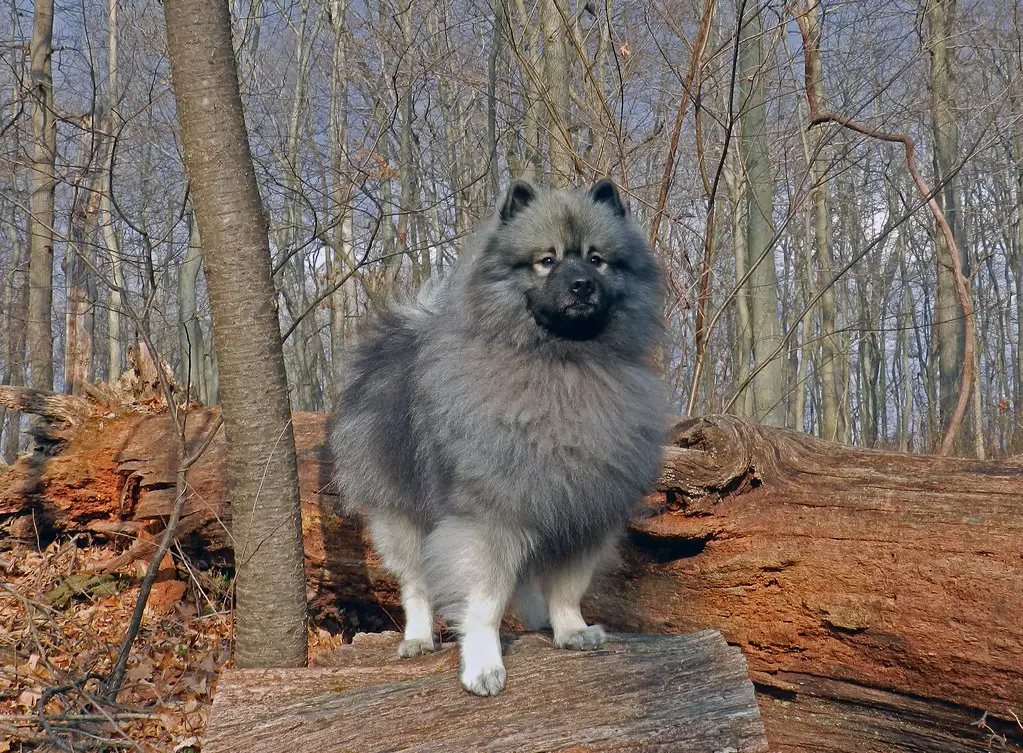
Keeshond is a dog for those who need an easy-going companion, as well as a playful companion for play and close emotional interaction. These fluffy, spherical “Dutchmen” are in constant spiritual dependence on the owner and his family members. Well, more specifically, the Wolfspitz relative will always prefer the company of a person to a canine society.
Keeshond is extremely peaceful and gets along easily with anyone. He does not bully pets (unless you yourself push the pet to such actions) and is ready to be friends with everyone who showed attention to him. The only thing that can disappoint and offend a dog is the psychological atmosphere reigning around it. Remember, Keeshonda is uncomfortable where they constantly shout and talk in a raised voice, as well as where they don’t pay attention to him, allowing him to entertain himself on his own.
Keeshonds, like cats, are tied to housing and practically do not sin with escapes. But these fluffy “mini-wolves” are sincerely glad to play, especially if the place of entertainment is transferred outside the home walls. In general, the correct Keeshond is such a shaggy extrovert who cares about everyone and everything and whose mission is to have an exceptionally positive attitude around. As an example: abroad, Keeshond, along with Golden Retrievers and Labradors, are attracted to Canis therapy, and this says a lot since only the most emotionally stable representatives of the canine genus are selected for such procedures.
The breed gets along well with children. Of course, it would be naive to expect that the pet will calm the bursting newborn baby, but the fact that the dog will find something to do and captivate the kindergartner is a fact. However, it is not recommended to abuse the good nature of the four-legged friend. If the animal has lain down to rest, it is unreasonable and cruel to “jerk” it because someone wanted to have some fun. Don’t forget the Dutch are excellent animators, but not servile jesters.
If Wolfspitz is a friend, colleague, and a bit of a hard worker, devotedly guarding the owner’s property, then his Dutch cousin is a smiley dog and a cheerful altruist, who must be gradually introduced to any work activity. And although the intellect of the breed is more than in order, it will still have to be engaged in the search for specific approaches to education and training.
Keep in mind that Keeshond should not be pressured and forced to do something from under the stick. Like all breeds, the relatives of the German Spitz cannot stand menacing shouts and the overly intrusive dominance of the owner. Moreover, this happens not because the dog wants to play the role of alpha itself, but because an unusual model of behavior is imposed on it.
Remember that the breed has not historically been a watchdog, and do not expect it to become one if a professional cynologist works with its representative. You can teach the Keeshond to bark at a stranger who has invaded your possessions, but instilling in him the aggression and suspicion of a “Caucasian” is a deliberately impossible task. Accordingly, if you need a furry security guard with the makings of a defender, such requirements are definitely not for Keeshond.
It is possible and necessary to teach a four-legged prankster but based on his addictions. To instill in your pet basic skills in the game and do not delay with the duration of the lessons. The best option is to break the lesson into five minutes, between which it is useful to maintain long pauses of 10-15 minutes. It is important to understand: Keeshond is not a breed that will endure and perform dull exercises to please someone. Nevertheless, the animal will have enough strength and talents to deal with the intricacies of OKD and develop an interest in agility and freestyle, if these disciplines are correctly, and most importantly, captivatingly presented.
As for the rules of home etiquette, then the “Dutch” have no difficulties. Keeshonds are by nature clean, so they quickly learn to use a tray or a diaper for their intended purpose and agree to endure in critical situations when access to a street toilet is blocked. It is not difficult to wean the dog from the owner’s pursuit and insistent calls to play if this is inconvenient for the owner. In such cases, you need to kindly but firmly refuse the ward. Do not worry, the dog will not be stressed, the animal will simply turn its attention to another object or go to rest and wait for it to be called again.
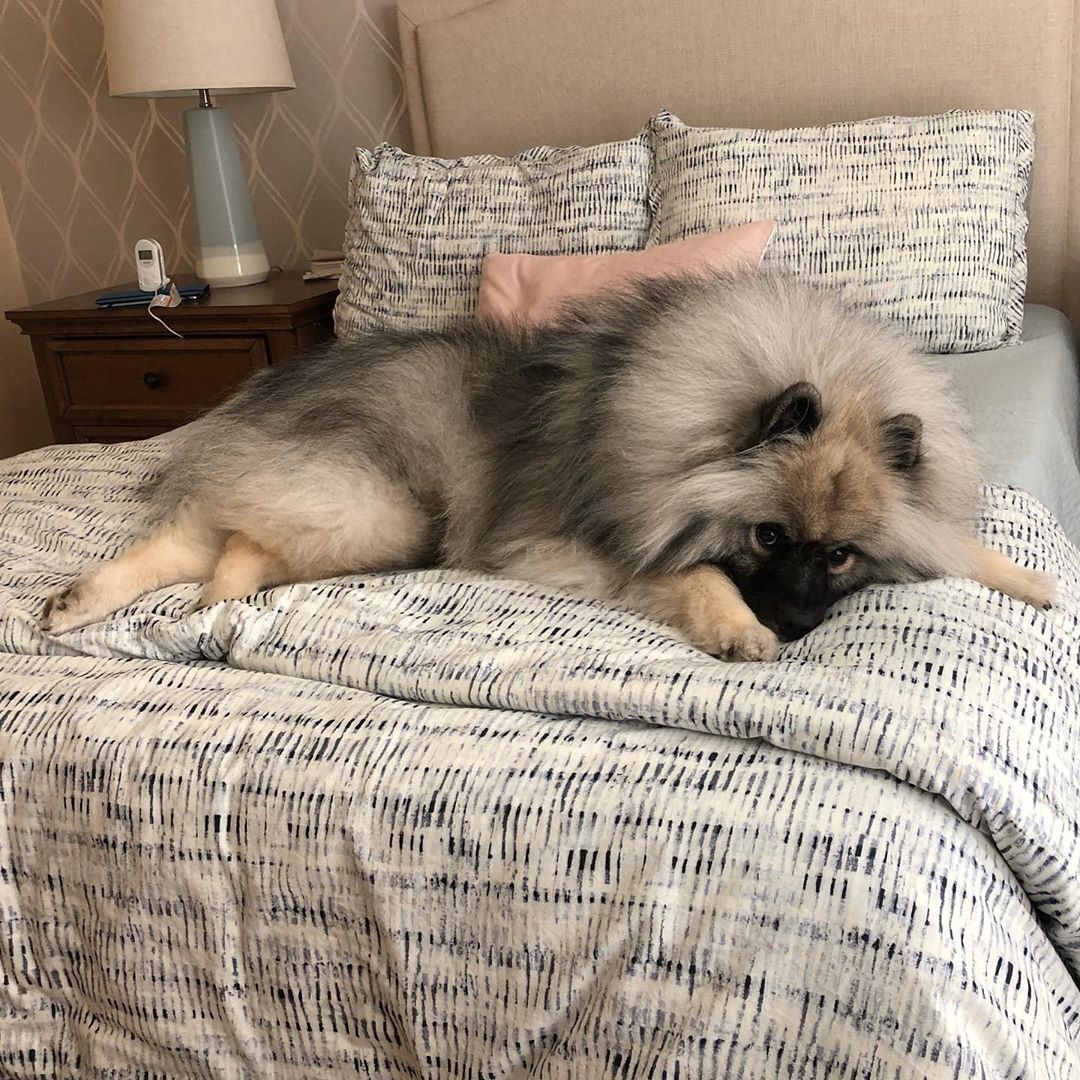
The ancestors of the Keeshond were ordinary yard dogs that lived in kennels, or even generally under the walls of sheds. Today, “smiling Dutch” are more often kept in homes because it is easier to maintain their glamorous image. The only nuance that will have to be taken into account is the poor tolerance of animals to high temperatures. Having lived for too long in the damp climate of Holland and Foggy Albion, the Keeshond have managed to adapt to it and now prefer a pleasant coolness to the heat. By the way, this is another reason why it is undesirable to keep a dog in a city apartment – four-legged friends are demanding not only for the freedom of space but also for the temperature regime, which in such rooms is difficult to adjust to the desired level of Keeshond.
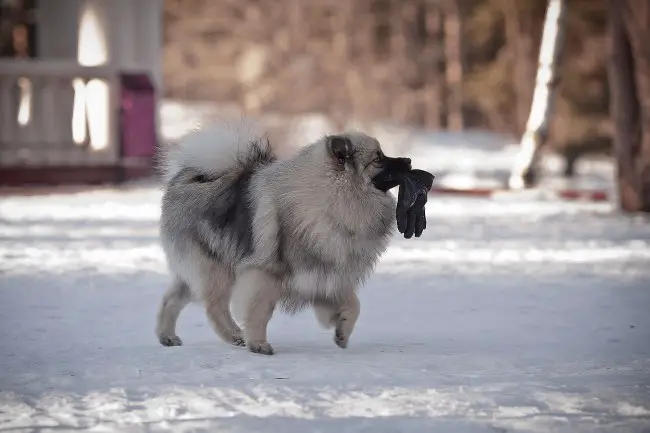
The coat of barge dogs acts as a natural thermoregulator, thanks to which the animals do not freeze on cool days and do not overheat in the heat. However, if the condition of the hair is not monitored, it quickly loses its magical properties. In particular, the keeshond needs combing, without which his fur coat accumulates excess fat and gets dirty, thereby preventing air circulation in the wool layers. On the other hand, wolf spitz relatives practically do not form tangles, and this is already a significant plus for owners who do not want to burden themselves with the daily care of a four-legged rascal.
Keeshondam haircuts are contraindicated, as they change the structure of the hair and expose the undercoat, making the body more vulnerable. An exception is made only for elderly individuals, which, due to their age, suffer more from high temperatures. True, it is not worth getting too carried away here, and in general, it is wiser to choose a lion’s “hairstyle” for the dog that preserves the breed characteristics of appearance. For young and healthy animals, hair is not shortened, but for hygienic reasons, the hairs are cut between the fingers and around the anal area.
The topcoat of the Keeshond sheds moderately throughout the year, so if you do not want to find shaggy “marks” on the floor, do not neglect weekly brushing. Care is also needed for the undercoat. Once every six months, this natural “insulation” sheds profusely, so you need to get rid of it. By the way, trimming the animal is undesirable. Better to go over the fur coat with a fine comb or brush, the effect of which can be enhanced with a brushing spray or antistatic agent from a pet store.
Surprisingly, but maintaining the stylish image of Keeshond is possible with little or no washing. Of course, if you are the owner of a show pet, you cannot do without an arsenal of shampoos, balms, and conditioners, as well as trips to the groomer. But most pet individuals easily put up with the absence of bathing days, so it is recommended to wash a fluffy friend using special animal products only if his wool is dirty and exudes an unpleasant amber. In other cases, it is easy to replace the shower with a thorough brushing.
Keeshond’s eyes and ears are hassle-free, but periodic cleaning and wiping are necessary for them too, so do not skimp on ophthalmic lotions and ear fluids. The dog needs to brush his teeth at least twice a week, and once a month the Keeshond is supposed to cut and polish his claws.
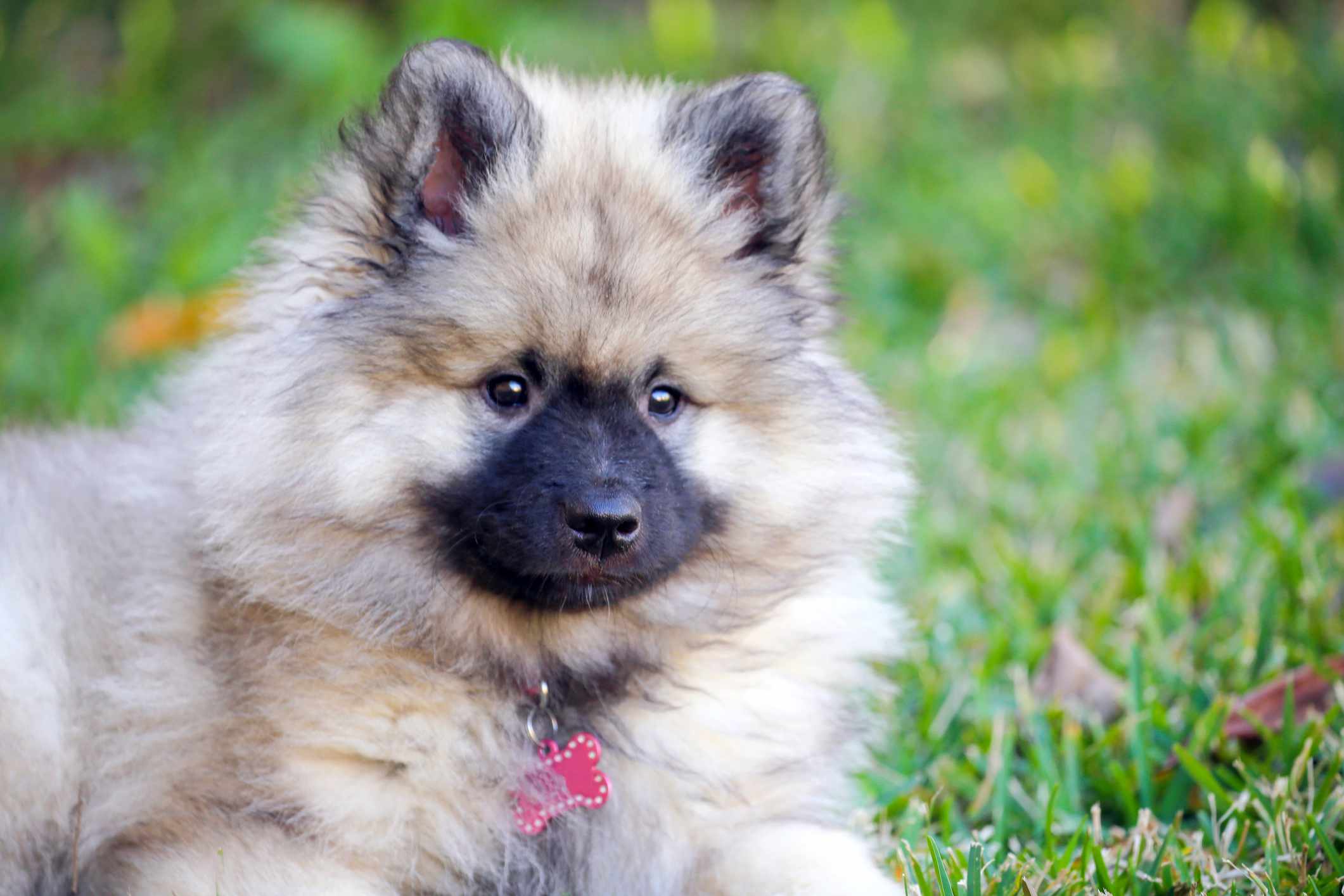
Keeshond is still that lover of belly stuffing, but this is not a reason to be moved and feed the pet from a basin. The breed has a hereditary tendency to obesity, so all attempts to please the dog with additives and high-calorie delicacies lead to a set of extra pounds and trips to veterinary offices. The calorie content of the Keeshond diet should be of a pronounced seasonal nature. In winter, the “Dutchman” is obliged to get more meat and offal (up to 500 g per day), but in the summer it is more useful to unload the digestive tract with a modest 300 g of animal protein.
The standard weight of the daily ration of Keeshond is 750-900 g. Usually, the menu includes the same products that are allowed for other dogs: cereals (oatmeal, buckwheat, rice), vegetables (except for potatoes and broccoli), low-fat dairy products, egg yolks. A complete ban on consumption applies to any food from the master’s table, sweets, sausages, and smoked meats, bones, raw fish, fruits (citrus fruits, grapes, pomegranates), semolina, and fatty pork.
Usually, puppies are handed out at two months of age, just at the time when the babies can be transferred to four meals a day. Further, the need to reduce the number of meals of the animal falls entirely on the owner. By the way, do not forget that a 9-month-old Keeshond should eat no more than twice a day.
For owners who prefer to keep pets on dry food, we can recommend super-premium and holistic-class brands, and special attention should be paid to cereals in the composition, which should be as small as possible in the “drying”. It is normal if the feed includes grains of rice (white or brown) and it is not very good if the main grain additive is wheat. Another important nuance: some expensive food can affect the shade of the Keeshond’s coat, which can be a serious nuisance for the owners of show individuals – at the exhibition, the tone of the dogs’ coat is examined meticulously.
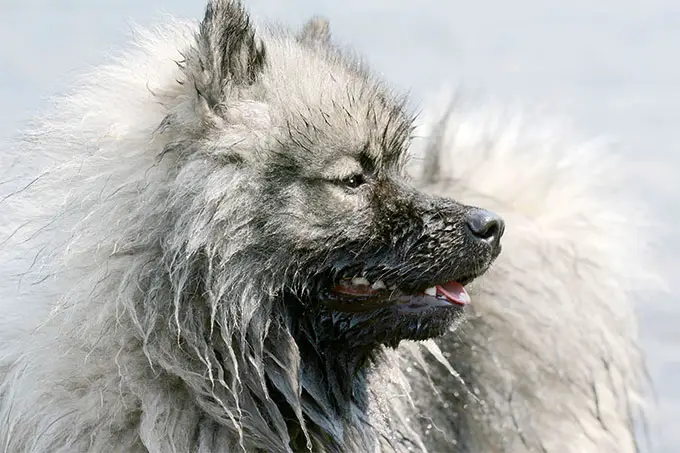
It is believed that, in contrast to the Wolfspitz, Keeshondas suffered less from breeding experiments and, accordingly, have better health. However, the breed has several serious hereditary ailments. One of them is hip dysplasia. The disease is transmitted from producers to offspring, therefore, breeders who value their reputation are examining breeds for the presence of this ailment.
Patellar subluxation, which is often found in Keeshond, can be both genetic and mechanical. Often, the disease develops as a result of an injury that was not noticed promptly by the owner. Some representatives of the breed may have von Willebrand disease – a violation of the blood clotting process.
Malfunctions of the thyroid gland and an insufficient amount of hormones produced by it lead to the development of hypothyroidism, which Keeshond puppies inherit from their parents. But epilepsy, which several decades ago was considered the scourge of the breed, is less and less common today. However, when buying a puppy, it will be useful to clarify information about epileptic seizures in a female and a stud dog.
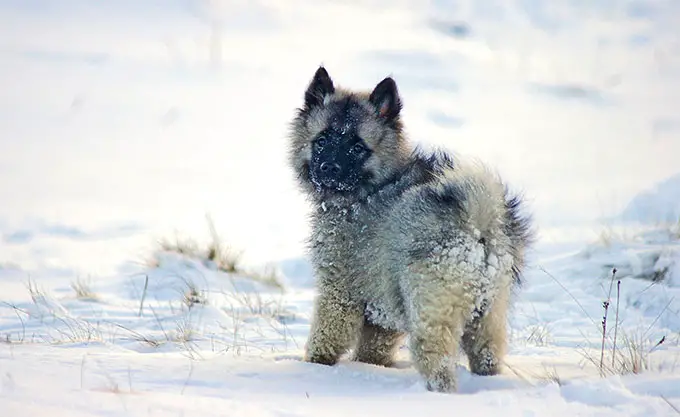
How to choose a puppy?
- It is pointless to choose a Keeshond puppy by gender. Representatives of this breed do not have pronounced “girls” and “boy” traits. At the same time, males are endowed with a more textured appearance, while females are distinguished by a pleasant grace of physique.
- Ask the breeder for the results of examining offspring for genetic ailments – dysplasia, patella, hypothyroidism.
- Look for a breeder who is ready to give up a puppy no earlier than 8 weeks old – at this age, babies are ready to painlessly part with their mother and brothers.
- Evaluate the conditions of keeping Keeshond, giving preference to nurseries where they practice suburban cultivation and do not lock animals in cages and cramped apartments.
- If you are looking to get a show dog, look for breeders offering 4-month-old puppies. At this age, the exhibition potential of Keeshond is better seen.
- Pay close attention to the color of the puppy. Unroll the coat, evaluate the thickness and uniformity of the undercoat, and immediately refuse to buy if even a tiny white speck is found on the coat – this is a serious defect that casts doubt on the breed of the litter.

